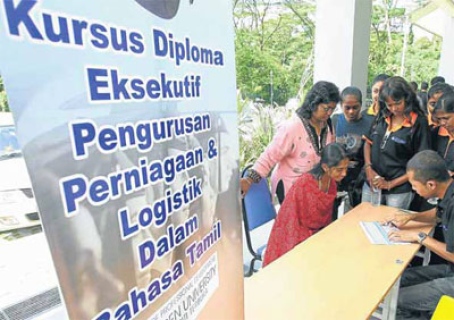Disrupting education innovatively
Professor Tan Sri Dato' Dzulkifli Abdul Razak
Learning Curve: Perspective
New Sunday Times - 27-11-2011
Innovation has to be disruptive to effect a transformational change.
It has been more than three years since the Accelerated Programme for Exellence (APEX) for Universiti Sains Malaysia (USM) was announced on Sept 8, 2008.
Much has been done and achieved in that short time. Some are visible as short-term measures, in quantifiable forms; others are less obvious, especially when they are transformational in nature and take a long time. In fact, the transformational mission of APEX is focused on the latter.
It is certainly not a quick fix as figures and percentages, which are used to measure change, are mostly incremental.
The argument is that transformational changes — especially when they challenge the status quo — take time to create an impact. Defenders of the existing conditions have to be convinced first and the battle can be long-drawn.
Authors Clayton M. Christensen and Henry J. Eyring, in their latest book The Innovative University: Changing the DNA of Higher Education from the Inside Out (Jossey Bass, 2011), make a distinction between two types of disruptive innovations.
One creates a new market by targeting non-consumers; the other competes at the low-end of an established market.
Prominent examples of two Malaysian universities come to mind for each kind.
An example of the first is the creation of the Open University Malaysia (OUM) as a result of the then Minister of Education Datuk Seri Najib Razak inviting Multimedia Technology Enhancement Operations Sdn Bhd (www.meteor.com.my), a consortium of 11 public universities, to establish the Open University.
It is based on the principles of flexible entry, student-friendly academic systems and a rich and diverse learning environment.

The commitment to interactive learning is a good example of disruptive innovation being harnessed to drive change and address the needs of a non-conventional student population.
As for the second type, USM’s promise to engage with the "bottom billions" and focus its APEX agenda on meeting the needs of the poor and marginalised is a unique example.
It is synergistic with Stuart L. Hart and Christensen underscoring the theory of disruptive innovation, suggesting that “existing mainstream markets are the wrong place to look for major new waves of growth”.
Similar to the Blue Ocean Strategy adopted by USM, the approach is to refocus the issue of competitive position and make it irrelevant to higher educational institutions by directing them to focus on unmet demand and new markets.
For USM, this points to its pledge to the “bottom billions”, which is to address their needs through an appropriate education agenda for teaching and research.
It compares well with Hart’s and Christensen’s emphasis on the “importance of focusing technology and product-development resources directly on the needs of the poor and the need to build long-term relationships with such partners as local communities, local companies and non-governmental organisations”.
Such longer term transformational and disruptive strategies are often not well appreciated from the “business-as-usual” viewpoint within the Key Performance Index (KPI) framework.
Disruptive growth is, after all, “business unusual” and does not conform immediately to the usual idea of a KPI. Instead, as the disruption takes root in social innovation, it is aimed at changing the rules of the game. It eventually paralyses the incumbent because it has no ability to play by the new regulations.
Even more so because of the creation of a new culture which is known as Key Intangible Performance in USM. It is about creating a new normal to move ahead!
One aspect of this new tradition is what Governor-General of Canada David Johnston recognised as something that USM is keen on, which is “the relationship between the arts and sciences”.
This, he duly acknowledged during his official visit and address at USM recently, and admitted as frequently overlooked.
Leonardo da Vinci, Michelangelo and Steve Jobs are examples of "transdisciplinary geniuses” who stood between the fusion of the Arts and Sciences.
Johnston correctly said: “There really is no line between the Arts and the Sciences — both seek to reveal and interpret truth.”
It is pointless to parrot the argument for the implementation of critical thinking, problem-solving and what are summarily labelled as 21st century skills if the margin for this is rigidly silo-ed in the arbitrary compartments of the Arts and Sciences, buttressed by the KPIs within the “old” normal.
Call it “innovation” if you want, but if it is not disruptive, then it is not innovative enough for a transformational change as expected under the APEX agenda.
- The writer is vice chancellor of Albukhary International University
